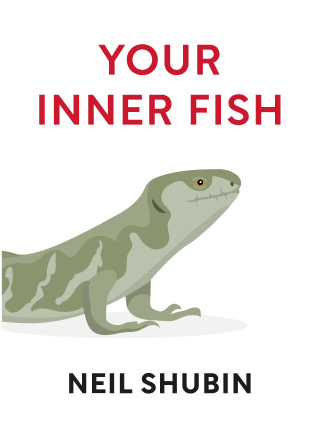

This article is an excerpt from the Shortform book guide to "Your Inner Fish" by Neil Shubin. Shortform has the world's best summaries and analyses of books you should be reading.
Like this article? Sign up for a free trial here .
How much DNA do we share with fish? Where do we see these similarities?
In order to answer the question “how much DNA do we share with fish?” you can consider how humans evolved. You can also look at similarities we still share with ocean life.
Keep reading to find out the answer to the question “how much DNA do we share with fish?”
How Much DNA Do We Share With Fish? How Genes Work
So exactly how much DNA do we share with fish? Just as echoes of our bone development can be seen in earlier animals, our genetic recipe also traces back to other creatures. DNA research answers questions about our development that fossil study can’t answer because variables can be manipulated in animal embryos to see what happens and help answer the question “how much DNA do humans share with fish?”
DNA contains the “recipe” that builds human or animal bodies from an egg. By experimenting with DNA in animal and shark embryos, scientists have shown that all appendages, whether limbs or fins, develop the same way from the same DNA recipe. This chapter looks at the experiments, starting in the fifties and sixties, that led to this understanding.
Although the human body is made up of hundreds of different kinds of cells, which make our bones, organs, nerves, and tissues function differently, all cells contain the same DNA. So this how much DNA do humans share with fish?
Organ and tissue cells develop differently because certain genes (stretches of DNA) in the cells are active while others are turned off. The active genes make a protein affecting what a cell looks like and how it behaves.
Understanding the on-off mechanism explains what genes build which parts of the body and how they work, whether building a limb or a fin. This can help us understand how much DNA we share with fish.
The DNA Recipe
In the 1990s, with new molecular techniques, researchers looked at DNA in flies to identify the mystery molecule dictating limb development. So how much DNA do humans share with fish?
In studying fruit fly development, which occurred from front to back as genes were turned on and off, they found a gene that made body segments, the front and back ends of the fly’s torso, look different from each other. They called it the hedgehog gene because flies with a mutated version of it developed bristles.
Researchers then found the hedgehog gene in chickens, mice, and fish. In chickens, scientists called it Sonic hedgehog after a video game character. They noticed it had a function similar to that of ZPA tissue, then realized the gene existed only in the ZPA and was involved in ZPA signaling.
Scientists soon found the Sonic hedgehog gene in every limbed creature, including humans, meaning that we all share the same genetic recipe for building upper arms, forearms, wrists, and digits. So how much DNA do we share with fish? It turns out, quite a lot.
From Fins to Hands
Further experiments traced the Sonic hedgehog gene and the other gene activity that builds limbs all the way back to fish and can help explain the answer to the question how much DNA do we share with fish.
Researchers in Shubin’s lab found the Sonic hedgehog gene in shark and skate embryos.
Since an effect of the Sonic hedgehog gene in more complex animals is to make limbs different from each other, they wondered how it would work in creatures that don’t have limbs. Sharks and skates were good test subjects because while they have “paired appendages” (fins), they don’t have limbs.
Skates have cartilage rods in their fins that all look alike. Inserting Sonic hedgehog protein from a mouse into a skate embryo resulted in rods that looked different from each other the way fingers do.
The experiments with sharks and skates showed that fins and limbs share the same DNA recipe. Rather than new DNA, the evolution from fins to limbs likely involved using genes of ancient origin in news ways.
Now you know the answer to the question “how much DNA do we share with fish?”

———End of Preview———
Like what you just read? Read the rest of the world's best book summary and analysis of Neil Shubin's "Your Inner Fish" at Shortform .
Here's what you'll find in our full Your Inner Fish summary :
- How your hands and feet are like a fish that lived hundreds of millions of years ago
- How the structure of your head can be traced back to an ancient, headless worms
- What parts of your body are uniquely human






